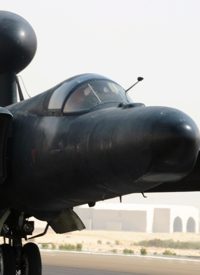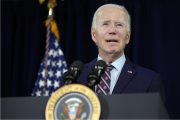
Americans do not like to think of their government as an aggressor against foreign countries. We prefer to believe that our country is always the victim of unprovoked attacks and that military actions our government takes against other countries are always in response to such unwarranted aggression. For this reason, Presidents have generally felt it necessary to provoke attacks secretly, knowing that once the country was attacked, seemingly with no cause, Americans would rally ‘round the flag and support the war the President had wanted all along.
Abraham Lincoln, for example, resupplied Fort Sumter in order to provoke the Confederacy into firing the first shot in the War Between the States. Franklin Roosevelt put the squeeze on Japan behind the scenes in order to “maneuver [the Japanese] into the position of firing the first shot without allowing too much danger to ourselves,” in the words of Roosevelt’s Secretary of War, Henry Stimson.
George W. Bush’s unconstitutional invasion of Iraq, therefore, seems to be somewhat of a novelty in that Bush could not frame it as a response to Iraqi aggression. This was not, however, for lack of trying to incite such seeming aggression. A January 2003 memo from British Prime Minister Tony Blair’s chief foreign policy adviser said that Bush “was thinking of flying U2 reconnaissance aircraft with fighter cover over Iraq, painted in U.N. colours. If Saddam fired on them, he would be in breach,” and the United States could then use that as an excuse for invading Iraq. Similarly, reported the Sunday Times of London, “the RAF and US aircraft doubled the rate at which they were dropping bombs on Iraq in 2002 in an attempt to provoke Saddam Hussein into giving the allies an excuse for war.”
Even before Bush and Blair got into the act, though, at least one member of the Clinton administration wanted to try a similar tactic, according to General Hugh Shelton’s new memoir, Without Hesitation: the Odyssey of an American Warrior. Justin Elliott, writing for Salon, reminds the reader that “regime change” in Iraq was just as much U.S. policy under Bill Clinton as it was under Bush, with the Clinton administration attempting “a little-remembered 1996 CIA coup” against Saddam and bombing Iraq for four days in December 1998, allegedly “in response to Saddam’s lack of cooperation with U.N. weapons inspectors.”
Elliott then quotes Shelton’s book, recalling an event that took place not long after Shelton became Chairman of the Joint Chiefs of Staff in October 1997:
Early on in my days as Chairman of the Joint Chiefs of Staff, we had small, weekly White House breakfasts in National Security Advisor Sandy Berger’s office that included me, Sandy, Bill Cohen (Secretary of Defense), Madeleine Albright (Secretary of State), George Tenet (head of the CIA), Leon Firth (VP chief of staff for security), Bill Richardson (ambassador to the U.N.), and a few other senior administration officials. These were informal sessions where we would gather around Berger’s table and talk about concerns over coffee and breakfast served by the White House dining facility. It was a comfortable setting that encouraged brainstorming of potential options on a variety of issues of the day.
During that time we had U-2 aircraft on reconnaissance sorties over Iraq. These planes were designed to fly at extremely high speeds and altitudes (over seventy thousand feet) both for pilot safety and to avoid detection.
At one of my very first breakfasts, while Berger and Cohen were engaged in a sidebar discussion down at one end of the table and Tenet and Richardson were preoccupied in another, one of the Cabinet members present leaned over to me and said, “Hugh, I know I shouldn’t even be asking you this, but what we really need in order to go in and take out Saddam is a precipitous event — something that would make us look good in the eyes of the world. Could you have one of our U-2s fly low enough — and slow enough — so as to guarantee that Saddam could shoot it down?”
In other words, as Lincoln and Roosevelt had done, and as Bush and Blair would do, this cabinet member wanted to provoke the designated enemy into firing the first shot to make it appear that America was an innocent victim of an evil foreign power, thus providing a pretext for war. Also, unless there were other unnamed cabinet members present, the way Shelton has written this (that Berger, Cohen, Tenet, and Richardson were all engaged in other conversations at the time), the only conclusion one can draw is that Albright is the one who made the request of Shelton. Given that Albright later claimed that the deaths of half a million Iraqi children because of U.S. sanctions were “worth it” to achieve U.S. objectives, sacrificing one U.S. airman for the same objectives could hardly have concerned her at all.
Shelton’s response, as he tells it, was admirable:
The hair on the back of my neck bristled, my teeth clenched, and my fists tightened. I was so mad I was about to explode. I looked across the table, thinking about the pilot in the U-2 and responded, “Of course we can …” which prompted a big smile on the official’s face.
“You can?” was the excited reply.
“Why, of course we can,” I countered. “Just as soon as we get your ass qualified to fly it, I will have it flown just as low and slow as you want to go.”
The official reeled back and immediately the smile disappeared. “I knew I should not have asked that….”
“No, you should not have,” I strongly agreed, still shocked at the disrespect and sheer audacity of the question. “Remember, there is one of our great Americans flying that U-2, and you are asking me to intentionally send him or her to their death for an opportunity to kick Saddam. The last time I checked, we don’t operate like that here in America.”
Of course, Shelton’s assertion that “we don’t operate like that here in America” was historically inaccurate. FDR, for instance, sacrificed 2,400 Americans in order to draw the United States into World War II. The Joint Chiefs of Staff under John F. Kennedy drew up plans for Operation Northwoods, which would have killed countless Americans in phony terrorist attacks to set the stage for a U.S. invasion of Cuba; Kennedy, to his credit, rejected the plan. And George W. Bush would later propose essentially the same thing as the unnamed cabinet official proposed to Shelton. Just the same, Shelton deserves credit for dismissing this suggestion so forcefully.
War is seldom the straightforward tale of good vs. evil that our government and its court historians would have us believe. Shelton’s anecdote serves as further evidence that, as the saying goes, the first casualty of war is truth.
Photo: U-2 reconnaissance aircraft

